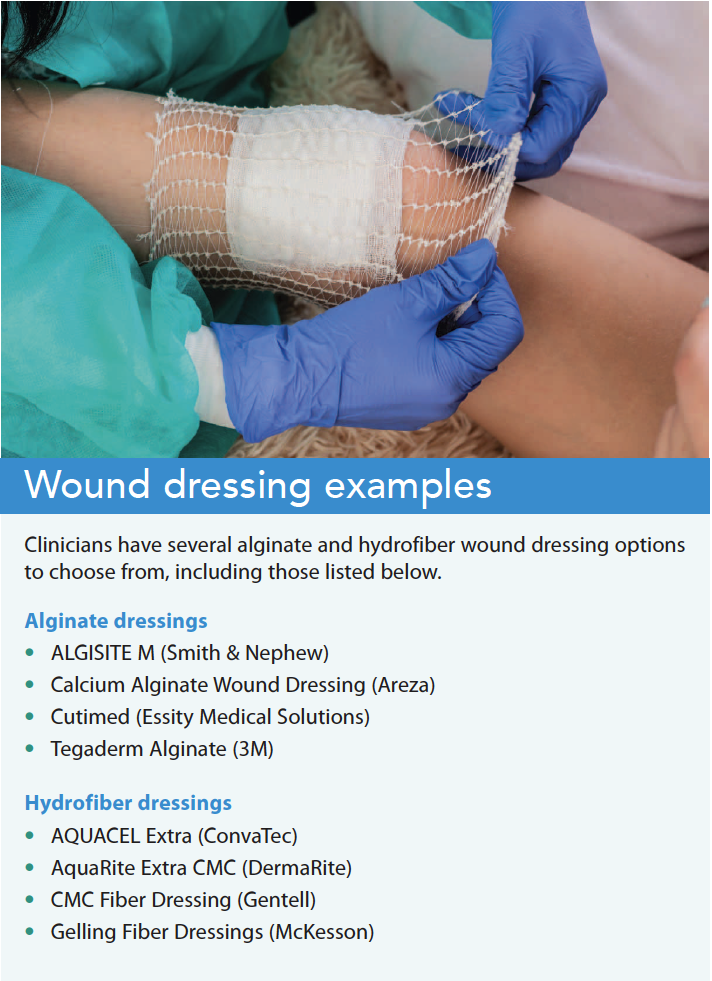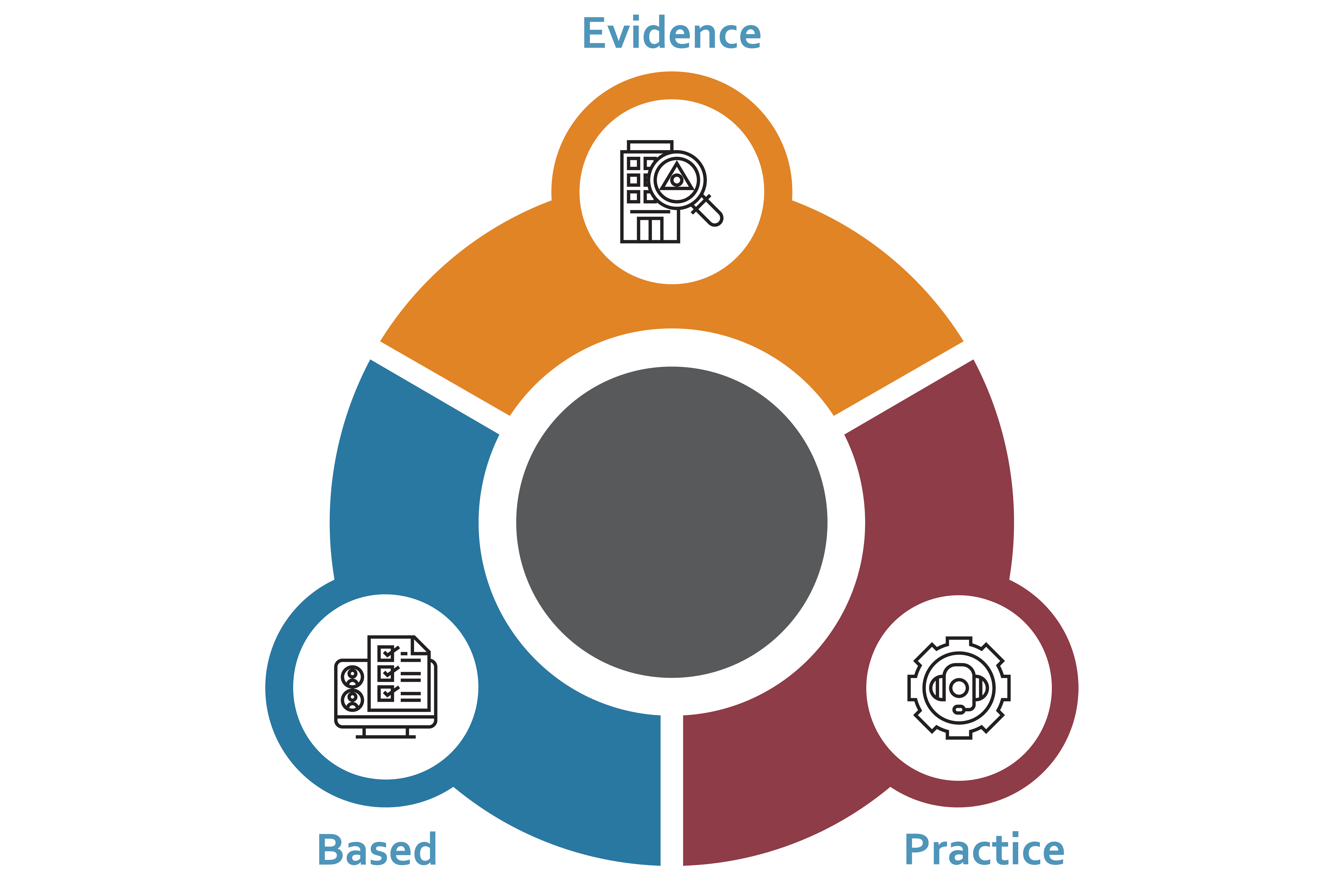The best practices for the best outcomes
Takeaways:
- Managing co-morbidities is key to wound care management.
- Clinical evidence does not support sterile over clean technique in wound care.
- Nursing judgement supersedes pressure injury assessment tools.
Nurses, physical therapists, physicians, and surgeons perform wound care in almost every care setting; however, evidence-based practices continue to elude many healthcare providers. Five key considerations—clean vs. sterile technique, hydrofiber vs. alginate dressing, negative pressure therapy and fistula management, co-morbidity management, and pressure injury risk assessment tools—can help all clinicians who provide wound care no matter the practice setting.
1. Clean vs. sterile technique
Although little clinical data exist to support sterile technique over clean technique, questions persist. Frequently, providers specify “sterile” for routine dressing changes, which leads to confusion among clinicians. In 2011, the Wound, Ostomy and Continence Nurses Society® (WOCN®) published a fact sheet explaining what current evidence indicates. In 2018, Kent and colleagues also found no difference in wound infection rates when using clean or sterile techniques.
According to the Centers for Disease Control and Prevention, only post-surgical wounds require a sterile dressing applied in the operating room. These dressings remain in place for 24 to 48 hours, after which they’re considered contaminated, eliminating the need for a sterile environment. The WOCN fact sheet states that clean technique is the most cost-effective approach to wound care and requires less time and fewer resources.
2. Hydrofiber vs. alginate
Although many think hydrofiber and alginate dressings are interchangeable, significant differences exist. The fact that they’re similar in appearance only complicates distinguishing them from one another.
Alginates, derived from algae or brown seaweed, can absorb up to 20 times their weight. Hydrofiber dressings made from lab-created carboxymethylcellulose, can hold 30 times their weight and present less risk of maceration than alginates, making them the preferred choice when managing wounds with copious amounts of drainage. Compound dressings that offer a mix of hydrofiber and alginate also are available. No evidence exists that compound dressing provides more efficacy than pure alginate or pure hydrofiber.
When selecting a dressing, consider the patient’s condition, wound drainage, and costs. Hydrofiber dressings cost slightly more than alginates but they last longer, which results in fewer dressing changes. They also can handle more drainage than alginates, making them a good option for heavily draining wounds. Always read the manufacturer’s guidelines before using advanced wound care products. (See Wound dressing examples.)

3. Negative pressure therapy and fistula management
The most recent edition of the WOCN Core Curriculum includes evidence-based, peer-reviewed guidelines regarding the use of negative pressure wound therapy (NPWT) to manage fistula output. The guidelines recommend considering NPWT for managing fistulas in open wounds if the fistula exhibits potential for closure and no exposed bowel is present. If management goals don’t include wound healing (or if healing isn’t possible), NPWT isn’t indicated.
The guidelines also state that fistula management should begin with the easiest approach and then to modify as necessary. The current gold standard begins with a pouching system, which is cost effective and provides greater patient mobility. If this option fails, other advanced modalities such as NPWT and suction may be considered, but only if the potential for closure exists.
4. Managing co-morbidities
Frequently, we select a dressing based on the premise it will heal a wound. However, patient condition and co-morbidities (such as diabetes, obesity, immune system dysfunction, malnutrition, cardiovascular disease, and cancer treatment) can prevent wound closure. A dressing provides an environment to help optimize wound healing, but if nutrition and co-morbidities aren’t managed appropriately, wounds will become chronic.
When conducting a thorough assessment, include medical history, medications, nutrition, and recent lab results. Also consider using a standardized assessment instrument, such as the validated Bates-Jensen Wound Assessment Tool. Certain medications, such as glucocorticoids, can interfere with wound healing, and abnormal lab markers (for example, glucose, glycated hemoglobin, and prealbumin) may indicate whether the patient’s nutrition status will support wound healing. Avoid tunnel vision when selecting a plan and consider the whole patient.
5. Pressure injury risk assessment tools
Many clinicians misunderstand and misuse pressure injury (PI) risk assessment tools, including the original Braden Scale, Norton Scale, and Waterlow Scale. These tools, which were developed over 30 years ago, don’t reflect current risk research and knowledge. We now understand that many factors (skin temperature, oxygenation, perfusion status, co-morbidities, age, blood tests, and medications) impact PI risk.
When the National Pressure Injury Advisory Panel addressed these tools and risk factors, they noted that, although structured PI risk assessment tools provide critical information, clinicians shouldn’t rely on the score alone. Nurses and other caregivers should use their professional judgement in conjunction with an assessment tool to formulate an accurate risk level for each patient.
Stay current and open-minded
Staying current with wound care best practices requires continuous effort. Take the time to read about new research and evidence to ensure you implement the most recent best practices. Stay open-minded and willing to change care approaches beneficial to patients.
American Nurse Journal. 2023; 18(2). Doi: 10.51256/ANJ022325;
Key words: wound care, hydrofiber dressings, alginate dressings, fistula, risk assessment
References
Carmel JE, Colwell JC, Goldberg MT, eds. Core Curriculum: Ostomy Management. 2nd ed. Fistula management. Philadelphia, PA: Wolters Kluwer; 2021.
European Pressure Ulcer Advisory Panel, National Pressure Injury Advisory Panel, and Pan Pacific Pressure Injury Alliance. Prevention of pressure injuries. In: Haesler E, ed. Prevention and Treatment of Pressure Ulcers/Injuries: Clinical Practice Guideline. The International Guideline. EPUAP/NPIA/PPPIA. 2019.
Gibbs KA. Absorptive dressings: Alginates and hydrofibers. Advances in Wound Care. 20101:142-7.
Kent DJ, Scardillo JN, Dale B, Pike C. Does the use of clean or sterile dressing technique affect the incidence of wound infection? J Wound Ostomy Continence Nurs. 2018;45(3):265-9. doi:10.1097/WON.0000000000000425
Mahmoudi M, Gould LJ. Opportunities and challenges of the management of chronic wounds: A multidisciplinary viewpoint. Chronic Wound Care Manage Res. 2020;7:27-36 doi:10.2147/CWCMR.S260136
Mangram, A. J., Horan, T., Pearson, M. L., Silver, B. S., & Jarvis, W. R. (1999). Guideline for Prevention of Surgical Site Infection, 1999, 20, 247-248. Centers for Disease Control and Prevention. https://jamanetwork.com/journals/jamasurgery/fullarticle/2623725
Wound, Ostomy and Continence Nurses Society Wound Committee and the Association for Professionals in Infection Control and Epidemiology, Inc. Clean vs. sterile dressing techniques for management of chronic wounds: A fact sheet. J Wound Ostomy Continence Nurs. 2012;39(2 suppl):S30-4. doi:10.1097/WON.0b013e3182478e06

